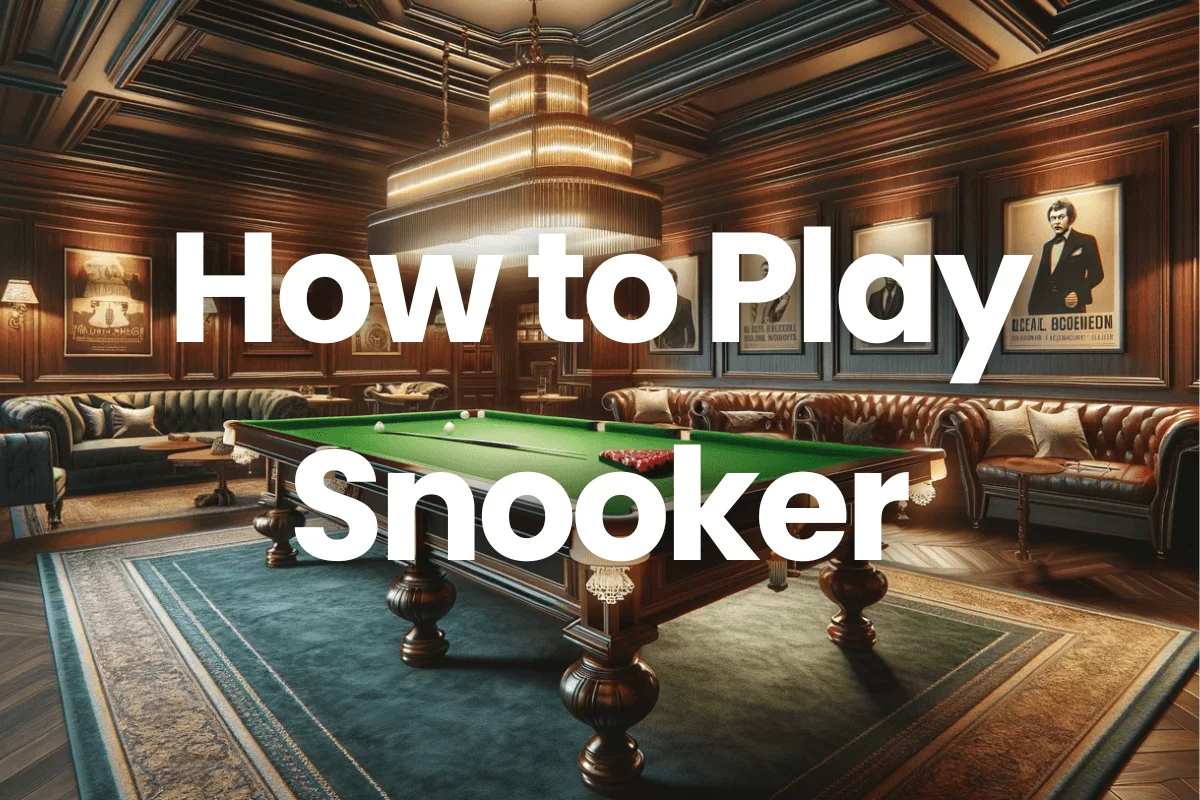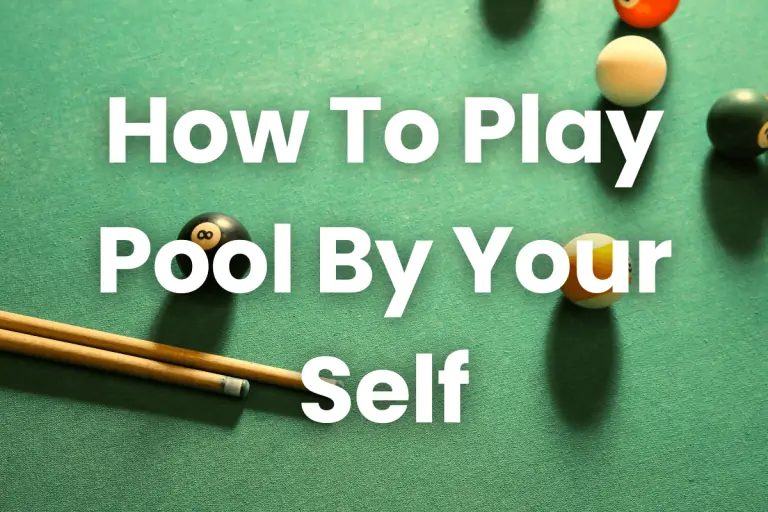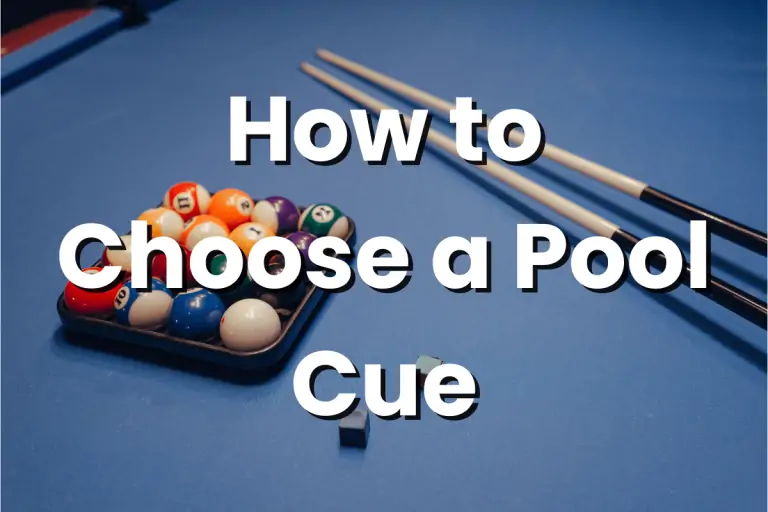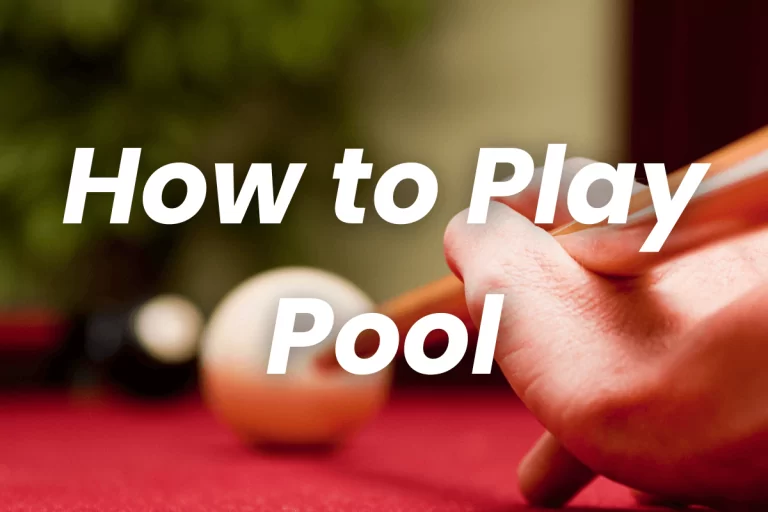How to Play Snooker | A Guide to Master the Game (2024)
Welcome to the thrilling world of snooker, a game where precision, strategy, and skill converge to create an enthralling experience. Originating in the late 19th century among British Army officers in India, snooker has evolved into a globally celebrated sport, captivating audiences with its unique blend of tactical play and finesse. Today, it enjoys a massive following, with tournaments broadcasted worldwide, drawing fans from every corner of the globe. This article is your gateway to understanding and mastering this prestigious game. We’ll guide you through the essentials of “how to play snooker,” laying the foundation for you to join the ranks of enthusiasts who find joy and challenge on the green baize.
Understanding the Basics of How To Play Snooker
Snooker Table and Equipment: A standard snooker table measures 12 feet by 6 feet, significantly larger than a pool table. It has six pockets, one at each corner and two in the middle of the long sides. The playing surface is covered with a green cloth, providing a smooth and even area for the balls to roll.
Snooker Balls: There are 22 balls used in snooker:
- One white cue ball.
- Fifteen red balls, each worth one point.
- Six colored balls with different point values: yellow (2 points), green (3 points), brown (4 points), blue (5 points), pink (6 points), and black (7 points).
Cue Stick: The cue stick is essential for striking the cue ball. It’s typically made of wood and can vary in weight and length. The tip of the cue is critical for accuracy and control during play. Proper handling and maintenance of the cue stick are vital for consistent performance.
Setting Up the Game of Snooker
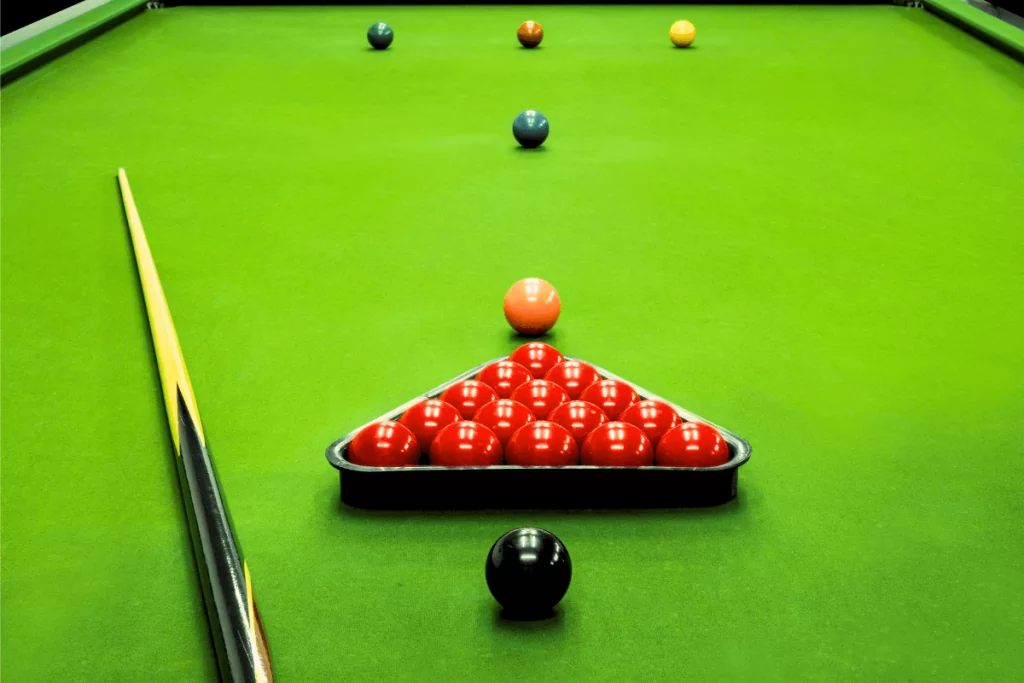
Setting Up the Snooker Table
Start your snooker adventure by correctly setting up the table. Place the fifteen red balls in a triangular frame at the table’s top end, with the pink ball positioned at the apex of the triangle. The black ball goes behind this triangle, and the other colored balls are placed on their designated spots across the table: yellow on the left corner, green on the right, and brown in the middle of the baulk line. The blue ball sits at the table’s center, while the pink ball is placed midway between the red triangle and the top cushion.
The Break Shot
The game kicks off with the break shot. The player strikes the cue ball from within the ‘D’ (a semi-circular area at the table’s bottom end) aiming to scatter the red balls. This shot is crucial as it sets the tone of the game, offering a blend of offense and defense. A good break can either provide an early advantage or protect against easy scoring opportunities for the opponent.
Strategic Importance of Initial Setup
The way you set up and execute the initial stages of the game can significantly influence the match’s flow. A well-thought-out break can control the table, forcing your opponent into challenging shots. This phase requires a blend of tactical thinking and skillful execution, setting the stage for a compelling and strategic game.
Embrace these initial steps with enthusiasm and care, as they lay the groundwork for a fascinating and skillful game of snooker.
Rules of Snooker
Basic Rules of Snooker
- The game involves alternating shots between players.
- Players must first target a red ball and if successful, they then aim for a colored ball. The sequence of red, color, red, color continues.
- After potting a colored ball, it is returned to its original spot until all reds are potted.
- Once all reds are potted, players must pot the colored balls in their ascending point order (yellow to black).
- A frame ends when all balls are potted, or a player concedes when behind more points than available on the table.
Scoring System of Snooker
- Points are earned by potting balls: red balls are worth 1 point, and colored balls range from 2 to 7 points.
- If a player pots the correct ball, they continue their turn.
- The player with the most points at the end of a frame wins that frame.
- A match consists of a predetermined number of frames, and the player winning the most frames wins the match.
Common Fouls and Penalties in Snooker
- Fouls occur when players fail to hit the correct ball first, pot the wrong ball, pot the cue ball (a ‘scratch’), or commit a ‘push shot’ (where the cue tip stays in contact with the cue ball for too long).
- Fouls result in penalty points awarded to the opponent, ranging from 4 to 7 points, depending on the severity or the value of the ball involved.
- Multiple fouls in a single shot are penalized by the highest value of the infringed balls.
- Continuous fouls can lead to losing a frame or even the match, depending on the rules set before the game.
Understanding these rules is crucial for a rewarding snooker experience. They form the framework of the game, turning it into a captivating blend of skill, strategy, and sportsmanship.
Techniques and Strategies in Snooker
Basic Cueing Techniques
Grip and Stance: Maintain a relaxed grip on the cue with your dominant hand, while the other supports the cue at the front. Stand with your feet shoulder-width apart, ensuring a stable stance.
Aiming: Focus on the exact point on the cue ball you want to strike to control direction. Maintain a smooth, straight cue action.
Follow-Through: After striking the cue ball, ensure a controlled follow-through to maintain accuracy and control.
Strategies for Shot Selection and Positioning
Plan Your Sequence: Think ahead about which ball to pot next. Consider positioning the cue ball for the next shot.
Break Building: When potting reds, position the cue ball to pot a colored ball and return to reds. This maximizes your scoring potential.
Safety Shots: Use safety shots to leave the opponent in a challenging position while avoiding fouls.
Snookers: When you’re behind, aim to create Snookers by hiding the cue ball behind other balls, making it difficult for your opponent to pot.
Tips for Playing Defensive and Offensive Shots
Defensive Play: Sometimes, the best strategy is to play defensively. Focus on preventing your opponent from scoring by placing the cue ball in a challenging position.
Offensive Play: When the opportunity arises, go for offensive shots. Potting colored balls after reds can provide significant points.
Reading the Table: Pay attention to the position of balls on the table, especially the remaining red and colored balls. Adapt your strategy accordingly.
Practice Patience: In snooker, patience is a virtue. Don’t rush shots; take your time to ensure accuracy.
Mastering these techniques and strategies will elevate your snooker game. It’s a balance between precision and decision-making, making snooker a captivating and intellectually stimulating sport.
Advanced Playing Tips in Snooker
Introduction to Advanced Techniques and Tactics
Side Spin (English): Learn to apply side spin to the cue ball. This allows you to control the path of the cue ball after contact with an object ball, opening up new possibilities for position play.
Cue Ball Control: Develop the skill of precise cue ball control. Mastering cue ball positioning is crucial for advanced gameplay.
Kicks and Cushion Shots: Practice using cushions (rails) to position the cue ball precisely, even when direct shots are obstructed.
Safety Battle: Understand when to engage in a safety battle, where you try to outmaneuver your opponent into committing a foul or making a mistake.
How to Read the Table and Anticipate Opponent Moves
Table Assessment: Continuously assess the state of the table. Identify the remaining reds, the position of colored balls, and any potential snookers.
Anticipating Opponent Moves: Study your opponent’s playing style and patterns. Anticipate their next move by considering their strengths and weaknesses.
Positional Play: Focus on setting up not just for potting balls but also for safe and strategic positions that limit your opponent’s options.
Developing a Personal Playing Style
Experimentation: Don’t be afraid to experiment with different techniques and strategies. Over time, you’ll develop a style that suits your strengths and preferences.
Consistency: Work on consistency in your shots and decision-making. A reliable style can be more effective than being flashy.
Mental Toughness: Develop mental resilience and adaptability. Snooker can be mentally challenging, and a strong mindset is crucial for advanced play.
As you progress in snooker, these advanced techniques and tactics will enhance your skills and make you a formidable player. Remember that practice and patience are key to mastering the nuances of this captivating game.
Conclusion
Snooker is more than just a game; it’s a test of skill, strategy, and composure. From the basics to advanced techniques, it offers a rich and rewarding experience for players of all levels. As you progress, the mental and tactical aspects become as crucial as your cueing skills. Whether you play for leisure or aspire to compete at a high level, snooker provides a platform for personal growth and enjoyment. So, step onto the green baize, embrace the challenges, and savor the thrill of mastering this elegant and timeless sport.
FAQs
What is the objective of snooker?
The objective of snooker is to score more points than your opponent by potting balls in a specific sequence. Players aim to pot red balls first, followed by colored balls in ascending point order.
How do I improve my cue ball control in snooker?
Improving cue ball control requires practice. Focus on your grip, stance, and striking technique. Work on positional play to leave the cue ball in favorable positions for your next shot.
What happens if I pot a ball out of sequence in snooker?
Potting a ball out of sequence results in a foul. Your opponent is awarded penalty points, and the wrongly potted ball is repositioned on the table.
Are there any specific rules for snooker etiquette?
Yes, snooker has a strong tradition of sportsmanship and etiquette. It’s important to respect your opponent, avoid distractions, and maintain silence during your opponent’s turn. Additionally, acknowledge fouls and concede gracefully when appropriate.

